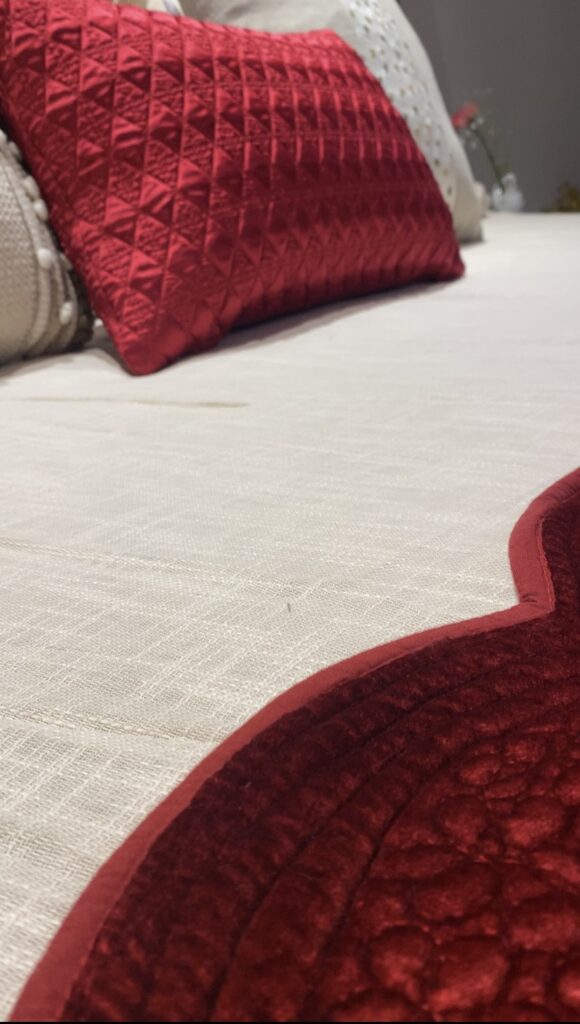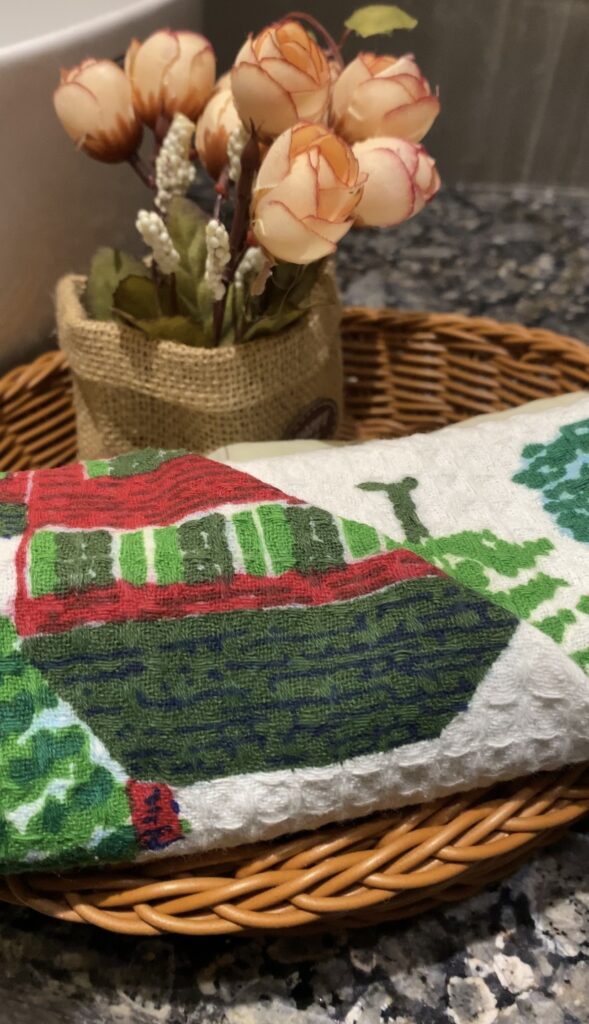Home Textiles: A Comprehensive Guide to Enhancing Comfort through the Right Choices. Let’s Discover!
The world of home textiles is gigantic and diverse, offering a multitude of options to enhance the comfort, aesthetics, and functionality of our personal spaces. From bedding to rugs, curtains to towels, each home textiles plays a very crucial role in defining the atmosphere of your dear home. In this comprehensive guide, we will dive into the importance of choosing the right textiles and provide insights into important aspects such as comfort, style, durability, maintenance, and their impact on your overall well-being.
Comfort and Relaxation :
Home is a place where we seek solace and comfort, and the choice of home textiles greatly influences this experience. Investing your hard-earned money in high-quality bedding with luxurious textures, materials and pleasing colors can transform your bedroom into a sanctuary of relaxation. Plush towels and soft rugs contribute to a spa-like experience in the bathroom, elevating and embracing the everyday routine. We’ll explore how the right home textiles create a cocoon of comfort, making your home a haven for relaxation.
Bedding Bliss: Opting for high-quality sheets and pillowcases made from soft, breathable materials such as cotton or linen can turn your home textiles game heads over heels. Thread count, fabric quality, and weave all contribute to the tactile experience, ensuring a cozy and restful night’s sleep.
Pillows and Cushions: Beyond the sheets, the selection of pillows and cushions adds an extra layer of comfort. The right pillow, tailored to your sleep style, provides crucial support for your neck and spine. Cushions in the living room, made from plush fabrics, invite you to sink into relaxation after a long day. Consider the fill material and density to find the perfect balance between softness and support in your home textiles.
Luxurious Throws and Blankets: Introducing throws and blankets made from sumptuous materials like faux fur or knitted wool can elevate the comfort of your living space. Drape them over sofas or at the foot of your bed, ready to envelop you in warmth on chilly evenings. The tactile pleasure derived from these home textiles enhances the overall sense of comfort and relaxation.
Bathroom Retreat: Transitioning to the bathroom, plush towels are essential for creating a spa-like experience. Consider a range of sizes and thickness to cater to different needs, ensuring that every touchpoint in your home contributes to a feeling of comfort.
Soft Rugs Underfoot: The sensation of softness underfoot is not only a tactile pleasure but also a visual one. Placing soft, plush rugs in key areas, such as the bedroom or living room, adds a layer of comfort. Choose rugs that complement the overall aesthetic of the room while providing a gentle cushion for your feet.
Temperature Regulation: Comfort is not only about the texture of home textiles but also about maintaining an optimal temperature. Breathable fabrics in bedding and clothing contribute to a comfortable sleep environment. In warmer seasons, lightweight and moisture-wicking materials help regulate body temperature, while in colder weather, insulating textiles provide warmth.
Personalized Comfort Zones: Recognizing that everyone’s definition of comfort varies, creating personalized comfort zones within shared spaces is essential. This may involve selecting individualized bedding, cushions, or even designated cozy corners that cater to different preferences within the household.



Aesthetics and Style :
Aesthetics play a pivotal role in home decor , and home textiles are key players in this visual symphony. We’ll discuss how the choice of colors, patterns, and textures can either harmonize with existing decor or introduce new elements of style. By exploring various design considerations, you can achieve a cohesive and visually appealing look that reflects your personal taste and enhances the overall ambiance of your living spaces.
Durability and Longevity :
Home textiles are not just about immediate comfort; they are also long-term investments. We’ll delve into the significance of durability and how selecting textiles crafted from high-quality materials can contribute to their longevity. This section will guide readers on making informed choices to ensure that their home textiles withstand the test of time, reducing the need for frequent replacements.
Fabric Selection: The journey toward durable home textiles begins with the careful selection of fabrics. Different areas of the home may require varying levels of durability. For upholstery and frequently used items, opt for fabrics known for their sturdiness, such as tightly woven cotton, microfiber, or synthetic blends.
Thread Count and Weave: In bedding, the thread count and weave influence both comfort and durability. While a higher thread count is often associated with softer sheets, it also contributes to strength and longevity. Consider percale or sateen weaves for bed linens, as they strike a balance between comfort and durability, ensuring that your sheets withstand regular washing and use.
Stitching and Seams: The integrity of stitching and seams is a crucial factor in the durability of textiles. Well-constructed seams and reinforced stitching contribute to the overall strength of items like curtains, upholstery, and linens.
Resistance to Wear and Tear: The durability of home textiles is tested through regular use, so selecting materials that resist wear and tear is essential. Consider the intended purpose of the textile – whether it’s for high-traffic areas like living rooms or frequently laundered items like kitchen towels.
Colorfastness: Longevity is closely tied to colorfastness – the ability of a fabric to retain its color over time. Quality textiles are often treated to resist fading, ensuring that vibrant colors remain true even after multiple washes.
Cleaning and Maintenance: The ease of cleaning and maintaining home textiles is integral to their longevity. Consider the care instructions provided by manufacturers and choose textiles that align with your lifestyle.
Versatility and Adaptability: Durable home textiles often possess versatility, adapting to changing needs and styles.

Maintenance and Cleaning :
Keeping your home textiles in pristine condition requires proper maintenance. We’ll explore factors such as fabric type and care instructions, offering practical tips for cleaning and preserving the lifespan of your textiles. Discovering easy-to-clean materials can not only save time and effort but also contribute to a hygienic living environment.
Stain Removal Techniques: Accidents happen, and stains are an inevitable part of daily life. Familiarize yourself with effective stain removal techniques for different types of fabrics. Prompt attention to spills and stains increases the likelihood of successful removal.
Proper Storage: Seasonal textiles, such as heavy blankets or winter bedding, benefit from proper storage during off-seasons. Ensure items are clean and completely dry before storing to prevent the growth of mold and mildew.
Gentle Laundering Practices: When it comes to washing textiles, opt for gentle laundering practices. Use mild detergents that are suitable for the fabric type, and avoid overloading the washing machine to allow for adequate water circulation.
Moth and Pest Prevention: Natural fibers, like wool and silk, are susceptible to moth damage. Use moth repellents, cedar blocks, or lavender sachets in storage areas to deter these pests.
Seasonal Considerations :
Different seasons may require different types of home textiles. Lightweight and breathable fabrics are suitable for summer, while heavier and warmer textiles are preferable for winter. Adapting your textiles to seasonal needs ensures comfort throughout the year.
Summer Lightness: In the warmer months, prioritize lightweight and breathable textiles to combat the heat. Choose cotton or linen bed linens that allow for better air circulation and moisture absorption, promoting a cool and comfortable sleep environment. Similarly, opt for lightweight throws and airy curtains to create a breezy and relaxed atmosphere in living spaces.
Winter Warmth: As temperatures drop, focus on creating a cozy and warm ambiance. Choose heavier and insulating textiles such as flannel or jersey for bedding. Layering is key – add extra blankets or throws in materials like wool or faux fur to provide warmth and comfort during colder nights.
Color Palette Shifts: Consider adjusting the color palette of your home textiles to align with the seasons. In spring and summer, lighter and brighter colors can evoke a sense of freshness and vibrancy. During fall and winter, richer, deeper tones can create a warm and inviting atmosphere. Swapping out cushion covers, throws, and linens is an easy way to refresh the look of a room with the changing seasons.
Outdoor Living Spaces: Consider seasonal textiles for outdoor living spaces. Outdoor cushions and rugs made from weather-resistant materials are ideal for spring and summer, providing a comfortable and stylish extension of your indoor living space.
Sunlight Exposure: The intensity of sunlight varies throughout the year. In summer, heavy curtains or blackout blinds can help block out excess sunlight and heat. In winter, consider sheer curtains that allow more natural light to enter while providing a level of insulation.
Holiday and Festive Themes: Some seasons are associated with holidays and festivities. Consider incorporating themed textiles to enhance the seasonal spirit. For example, festive linens, decorative cushions, and seasonal tablecloths can add a touch of celebration to your home.